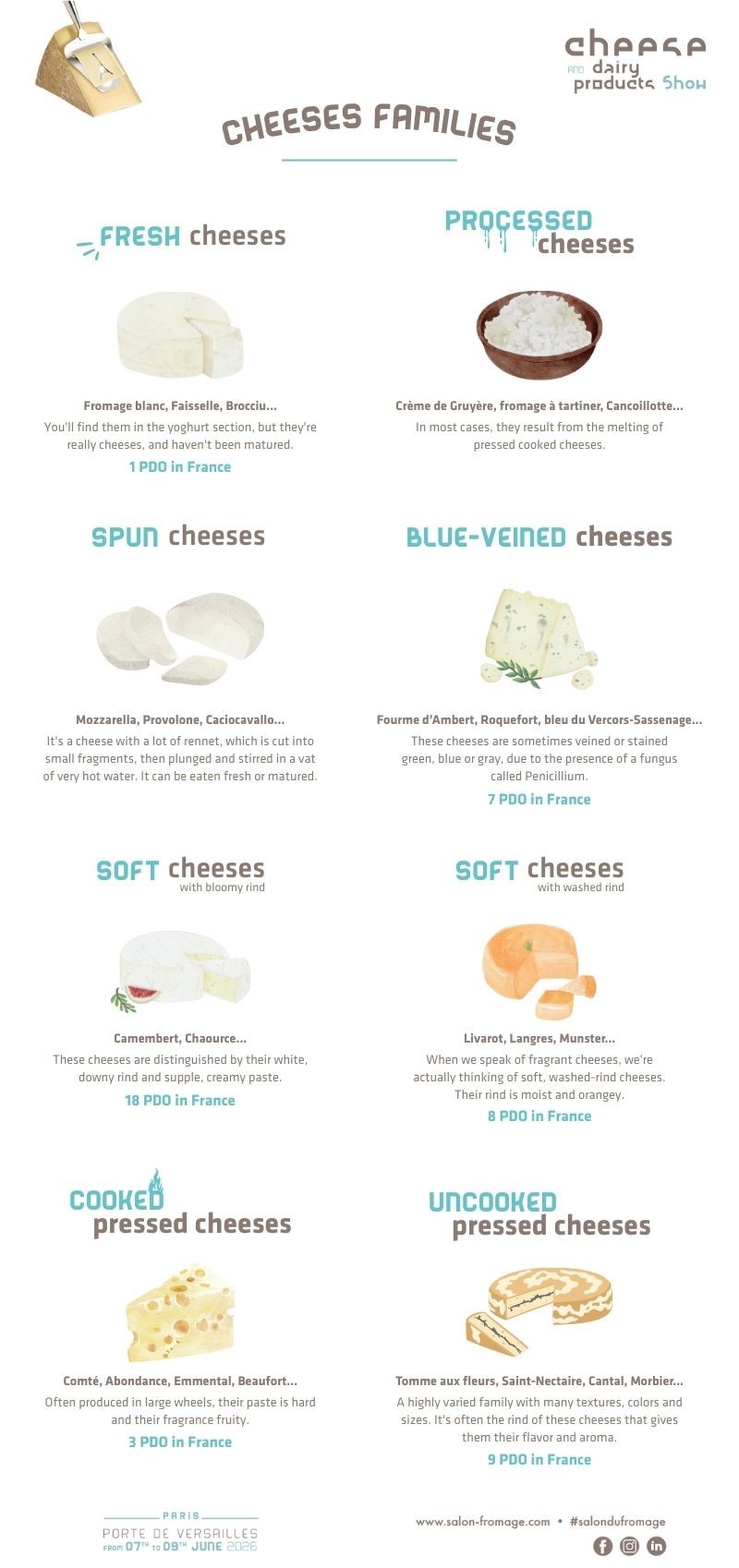Fresh cheeses, processed cheeses, spun cheeses, blue-veined cheeses, soft cheeses with a bloomy rind, soft cheeses with a washed rind, pressed cheeses (cooked or uncooked): there are now eight main families that distinguish the world's cheeses, including the 1,200 varieties of cheese listed in France by the CNIEL.
This infographic will help anyone who is still unsure about the basics of cheese classification to navigate the different families of cheese.

A recent concern
Given the long history of cheese, this desire for classification may seem relatively recent. Until the 19th century, cheese nomenclature was purely empirical, based on regional practices, raw materials and local expertise. Distinctions did exist, of course, linked to geographical origin, animal breed, seasonality and ripening techniques, but there was no formal, unified system.However, the need for such a system became apparent with the growth of the cheese industry and international trade in cheese, which required universal recognition of clear criteria, taking into account factors such as the type of curdling (lactic, rennet, mixed), processing temperature, pressing, cooking, maturing, etc.
The need for standardisation became even more urgent with the development of official designations, starting in 1925 (the first AOC for Roquefort). And that is how we gradually arrived at this table, which defines our eight families of cheese!
Bloomy crust or washed crust?
Some distinctions are obvious to everyone (it's hard to confuse a blue cheese with a pressed cheese), while others are less so. One such distinction is between ‘bloomy crust’ and ‘washed crust’ in the soft cheese category.
It's simple: the difference lies in the ripening process. Cheeses seeded on the surface with a fungus that forms a white down during ripening are called ‘soft bloomy rind’ cheeses (Camembert, Coulommiers, Chaource, etc.) and ‘soft washed rind’ refers to those whose rind is actually – and regularly – washed to encourage the development of the desired bacteria in order to obtain the desired cheese. Various liquids can be used for washing: brine (Mont d'Or), salt water with added ferments (Munster, Maroilles), Bourgogne marc (Époisses), cider (Livarot), etc.
Among France's 46 PDO cheeses, there are a good number of soft, washed-rind cheeses (8 references), but it must be said that bloomy crusts reign supreme in this category, with 18 references (nearly 40% of French PDO cheeses). But don't worry: you're sure to come across all eight families at the next Cheese and Dairy Products Show from 7 to 9 June at Paris-Porte de Versailles!

